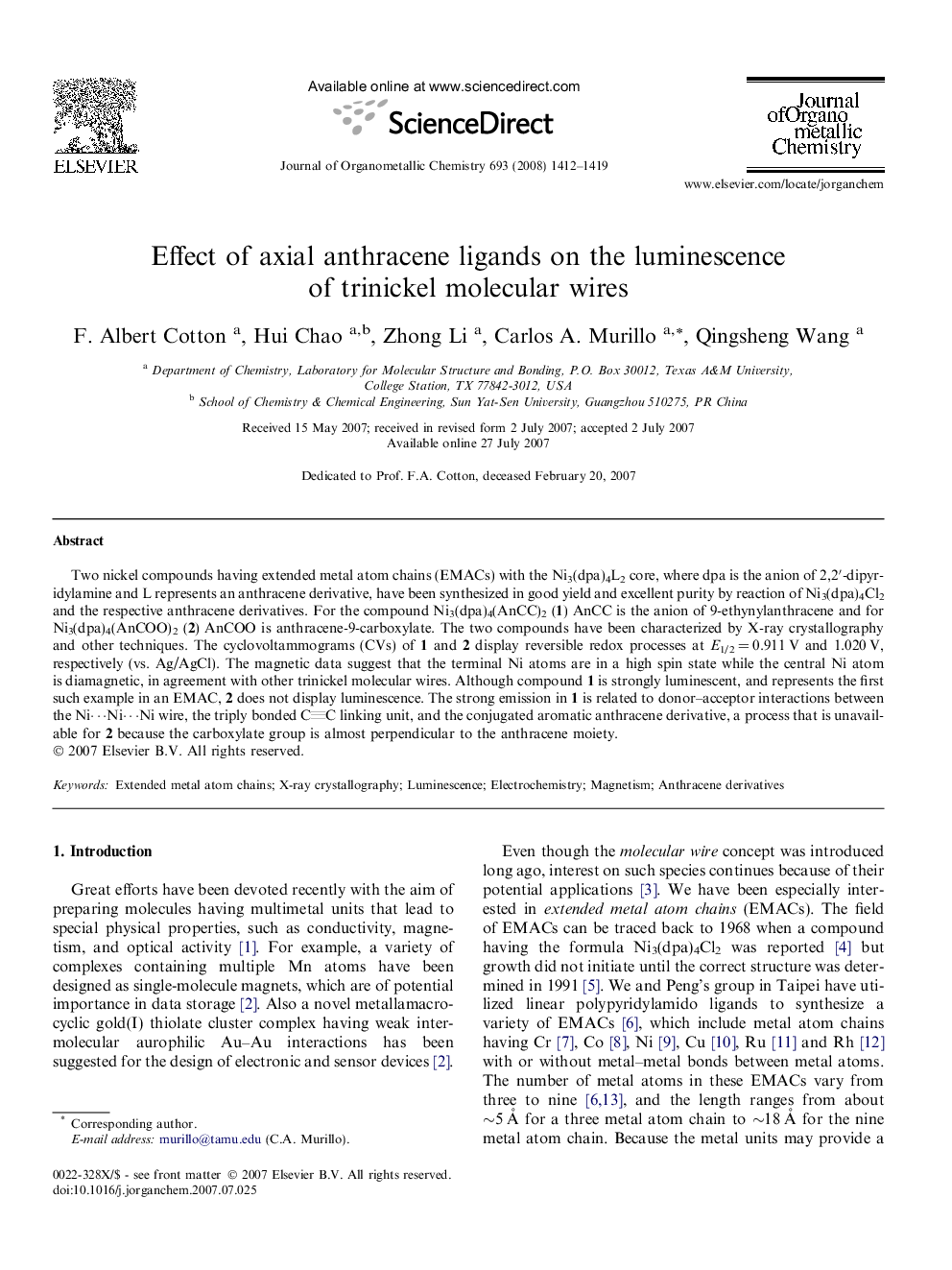| Article ID | Journal | Published Year | Pages | File Type |
|---|---|---|---|---|
| 1327975 | Journal of Organometallic Chemistry | 2008 | 8 Pages |
Two nickel compounds having extended metal atom chains (EMACs) with the Ni3(dpa)4L2 core, where dpa is the anion of 2,2′-dipyridylamine and L represents an anthracene derivative, have been synthesized in good yield and excellent purity by reaction of Ni3(dpa)4Cl2 and the respective anthracene derivatives. For the compound Ni3(dpa)4(AnCC)2 (1) AnCC is the anion of 9-ethynylanthracene and for Ni3(dpa)4(AnCOO)2 (2) AnCOO is anthracene-9-carboxylate. The two compounds have been characterized by X-ray crystallography and other techniques. The cyclovoltammograms (CVs) of 1 and 2 display reversible redox processes at E1/2 = 0.911 V and 1.020 V, respectively (vs. Ag/AgCl). The magnetic data suggest that the terminal Ni atoms are in a high spin state while the central Ni atom is diamagnetic, in agreement with other trinickel molecular wires. Although compound 1 is strongly luminescent, and represents the first such example in an EMAC, 2 does not display luminescence. The strong emission in 1 is related to donor–acceptor interactions between the Ni⋯Ni⋯Ni wire, the triply bonded CC linking unit, and the conjugated aromatic anthracene derivative, a process that is unavailable for 2 because the carboxylate group is almost perpendicular to the anthracene moiety.
Graphical abstractTwo EMACs having the formulas Ni3(dpa)4L2 where L is an anthracenyl derivative (AnCC (1) and AnCO2 (2)) have very different luminescence behavior because of the relative orientation of the axial ligands L. Compound 1 is strongly luminescent while 2 is not luminescent.Figure optionsDownload full-size imageDownload as PowerPoint slide
